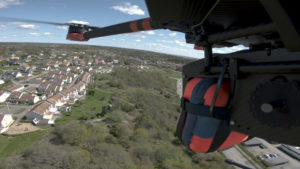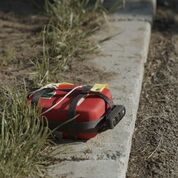
“Out-of-hospital cardiac arrests affect some 275,000 individuals in Europe each year and carry a low survival rate of about 10%. Research suggests when CPR and early defibrillation is initiated within the first few minutes the survival rate could potentially increase to as much as 70%,” says the Everdrone press release. “Now available to more than 80,000 residents in the Gothenburg area of Sweden, the service is part of a clinical study in collaboration with Sweden’s national emergency call centre, SOS Alarm, and the Centre for Resuscitation Science at Karolinska Institutet (KI).”
“By combining our state-of-the-art drone platform and know-how in the regulatory space, we are finally able to launch this life-saving application,” says Mats Sällström, CEO of Everdrone. “The collaboration with SOS Alarm and KI has been absolutely crucial for the realization of the concept in terms of being able to perform a swift alarm response, and to manage the medical and ethical issues involved.”

“In the event of a cardiac arrest, the drone is dispatched at the same time as the ambulance and will certainly be the first to arrive on the scene. Our operators are ready to instruct bystanders on how to initiate the life-saving device,” says Mattias Regnell, Head of Innovation and Research at SOS Alarm.

“The method of lowering the defibrillator from the drone with the help of a winch is something we have been developing and testing for a long time,” says Sällström. “We have performed countless test deliveries in recent months, and the results show that the method works very well.”
“We see enormous potential for this type of fully-integrated drone system. This study is unique, the first of its kind in the world, and we look forward to objectively evaluating the project together with Everdrone and SOS Alarm,” says Andreas Claesson, Associate Professor at KI.
Miriam McNabb is the Editor-in-Chief of DRONELIFE and CEO of JobForDrones, a professional drone services marketplace, and a fascinated observer of the emerging drone industry and the regulatory environment for drones. Miriam has penned over 3,000 articles focused on the commercial drone space and is an international speaker and recognized figure in the industry. Miriam has a degree from the University of Chicago and over 20 years of experience in high tech sales and marketing for new technologies.
For drone industry consulting or writing, Email Miriam.
TWITTER:@spaldingbarker
Subscribe to DroneLife here.
